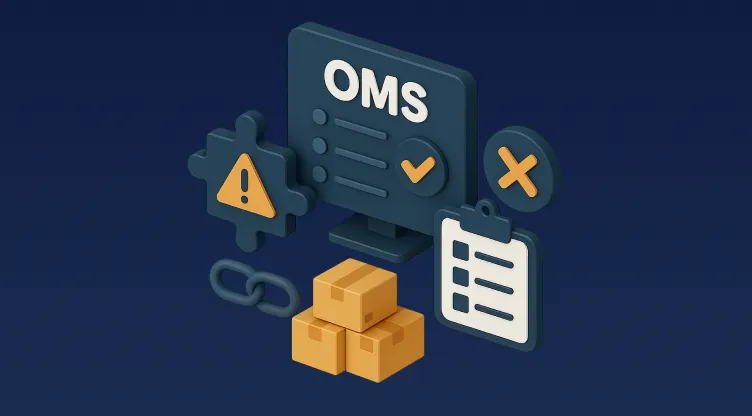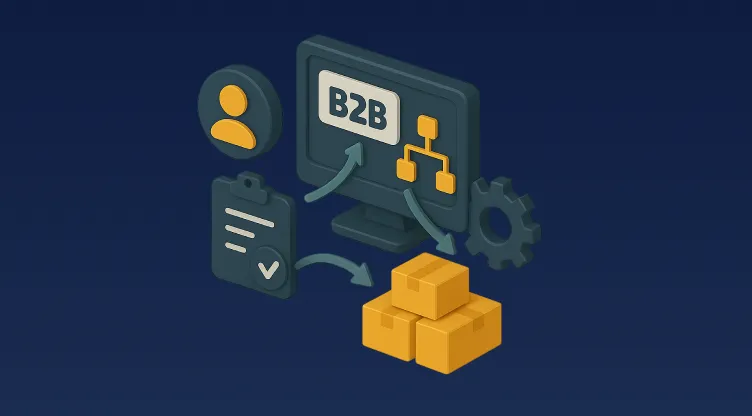Mastering OMS Implementation: Overcoming Common Roadblocks for Seamless Operations

Table of Contents
Quick Wins - Key OMS Roadblocks and Smart Solutions
- Integration Woes: Use Omniful OMS for seamless data flow.
- Data Transfer Worries: Plan for accurate data migration.
- Scalability Issues: Use systems that can grow with your business.
- Training Challenges: Provide intuitive tools and clear onboarding.
- Inventory Visibility Gaps: Use Omniful WMS for real-time stock updates.
Introduction: Why an OMS is Essential for Modern Retail
In today's fast-paced retail world, an Order Management System (OMS) is a must-have. It acts as the central hub for order processing, inventory tracking, and customer management. A well-implemented OMS can streamline operations, reduce errors, and enhance customer satisfaction. However, deploying a new OMS comes with its own set of challenges. These challenges can disrupt workflows, frustrate staff, and even impact customer loyalty if not handled properly.
1. Integration Complexities - Making Systems Work Together
The Challenge: Integrating a new OMS with existing systems like ERPs, CRMs, and sales channels can be complex. Without proper integration, businesses often struggle with data silos, delayed order updates, and inconsistent customer experiences.
The Solution: Choose an OMS that supports flexible, plug-and-play integrations. Omniful OMS, for example, connects seamlessly with major e-commerce platforms, warehouse management systems, and point-of-sale tools. This reduces the need for custom code, keeps data consistent, and improves order accuracy.
2. Data Migration - Moving to a New System Without Losing Information
The Challenge: Data migration is another significant roadblock. Moving order histories, customer profiles, and inventory data from old systems to a new OMS can be complex. Mistakes during this process can disrupt operations and damage customer relationships.
The Solution: Plan your data migration carefully. Start with critical data, like active orders and customer details, before moving on to historical data. Clean and validate your data before the transfer to reduce errors. Omniful OMS supports structured data imports, making this process smoother.
3. Scalability Challenges - Growing Without Slowing Down
The Challenge: As businesses grow, their order volumes increase, often outpacing the capacity of their OMS. This can lead to slower order processing, higher operational costs, and frustrated customers.
The Solution: Choose an OMS that scales with your business. Omniful OMS is built for flexibility, supporting large product catalogs, multiple warehouse locations, and diverse sales channels. It also offers real-time order updates, reducing the risk of overselling and stockouts.
4. User Training and Adoption - Helping Teams Embrace New Tools
The Challenge: Employees often resist new systems, fearing that the change will disrupt their work. This can slow down adoption and reduce productivity.
The Solution: Choose a user-friendly platform that reduces the learning curve. Omniful OMS is designed to be intuitive, making it easier for teams to get up to speed quickly. Providing ongoing support and training also helps boost user confidence.
5. Real-Time Inventory Management - Keeping Stock Levels Accurate
The Challenge: Without accurate, real-time inventory data, businesses risk overselling, stockouts, and customer dissatisfaction.
The Solution: Use an OMS that integrates directly with your inventory management system. Omniful’s Warehouse Management System (WMS) provides real-time stock updates, accurate demand forecasting, and automated reordering, reducing the risk of inventory errors.
6. Cost Management - Balancing Expenses with Long-Term Gains
The Challenge: Implementing an OMS can be expensive, and businesses often worry about long-term ROI.
The Solution: Focus on long-term benefits. An efficient OMS reduces operational costs, minimises order errors, and boosts customer satisfaction, leading to a faster ROI. Omniful OMS offers flexible pricing, making it a cost-effective choice for businesses of all sizes.
Conclusion: Setting Your OMS Up for Success
Implementing an OMS is a critical step for businesses aiming to streamline operations and improve customer satisfaction. By addressing these common challenges early, you can avoid costly mistakes and ensure a smoother rollout. For a powerful, scalable OMS that supports your growth, consider Omniful OMS, a comprehensive solution designed for modern retail.























